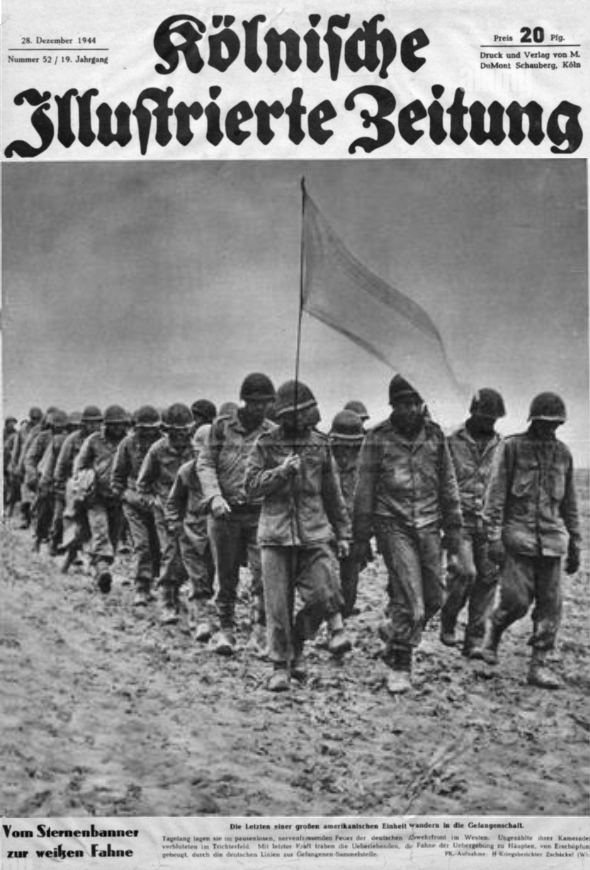
We’re back to SSI’s Breakthrough in the Ardennes. In the first 6 days of the game, I tried to pierce the Allied lines to decisively win the battle, but only managed to do this on the evening of the 6th day… just as sky cleared and the American and British reinforcements started to pour. I did not know it yet, but it would not change much to my situation: the sky clouded again and remained so for most of the campaign, and the Allied wasted their reinforcements and never mounted a counter-attack, except on one point near Bastogne.
22nd of December (turn 7)
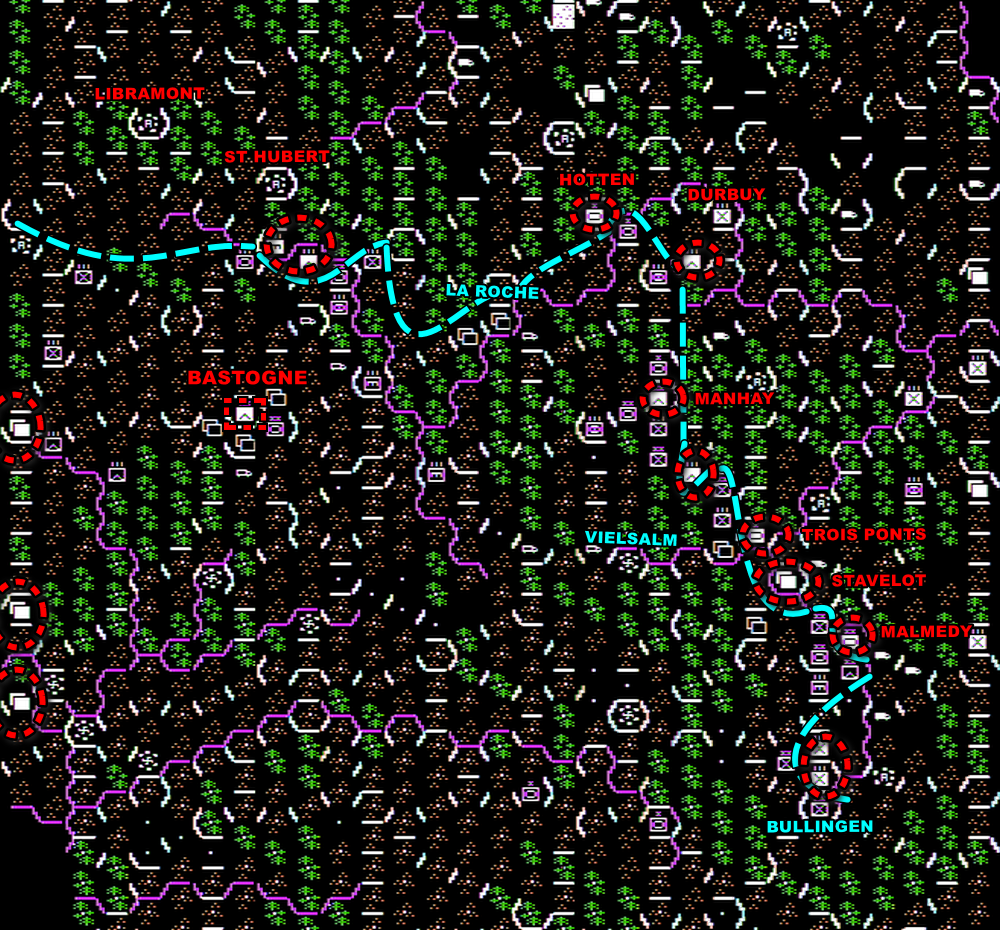
For convenience’s sake, I will still pretend that the North is at the top of the map, when it’s actually on the right.
Well, thanks to the US Air Force, this is a progressive return of the game. The sky has cleared today, allowing the Allies to run interdiction missions on my columns this turn. The speed of those units about to exploit the breach is halved and a good number of my other units have unrelated supply issues. All-in-all, I am not very mobile this turn and particularly around St Hubert – I can’t push through.
Still, I use this time to finally clear Trois Ponts and more importantly Bastogne, freeing quite a few units for the future. Let’s see whether you can interdict all those extra units as well, computer!
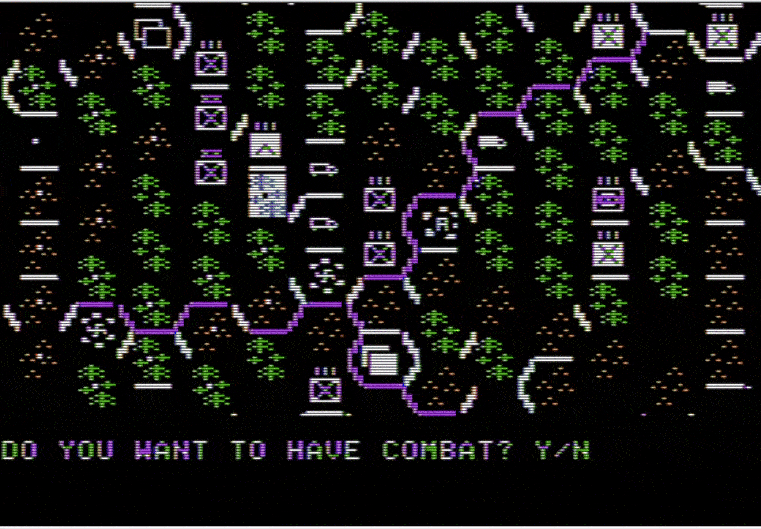
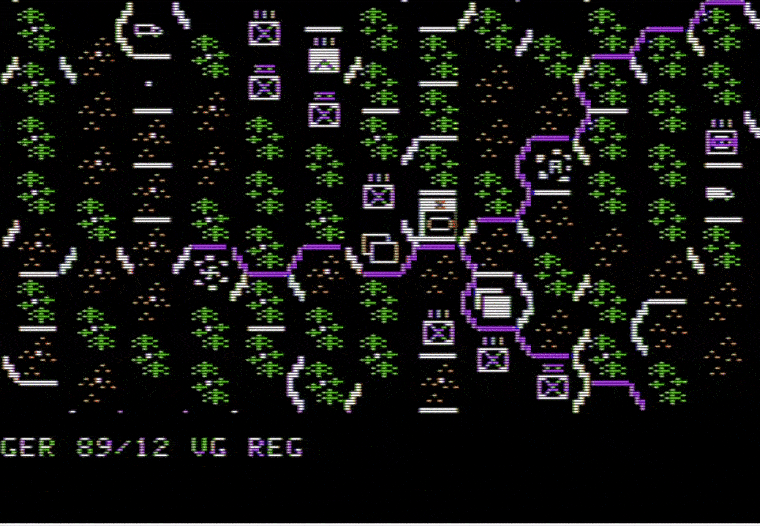
I also allocate some of my units to placate the enemy reinforcements in the West – the last thing I want is enemy units cutting my supply lines.
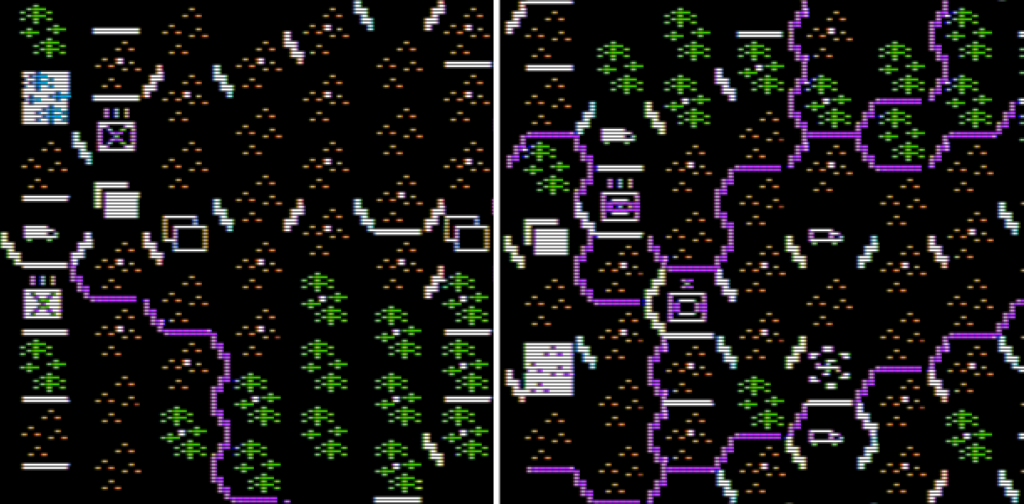
23nd of December (turn 8) – 950 points
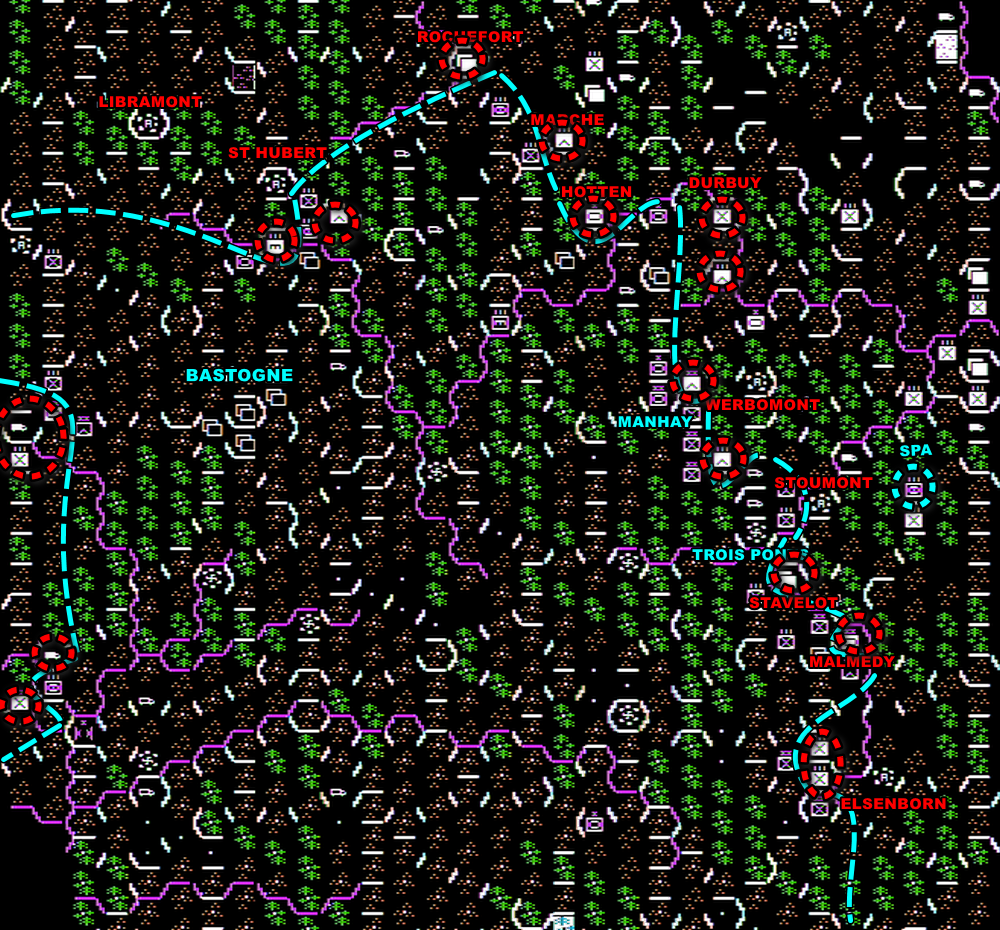
As I passed the midpoint of this campaign, it is time to assess the situation. It is, well, neither bad nor great. I have 950 points, and I need 2300 points for a (marginal) victory, so there’s a lot to bridge. I can get points by
- Controlling strategic towns: 25 points/turn, 50 for Bastogne,
- Destroying significant (not battalions or engineers) allied units: 50 points each,
- Exiting units from the map – the closest exit point is North of Rochefort so it is not going to happen,
- Having a larger army than my opponent at the end of the battle,
I believe I can count on 150 points by turn from the cities I currently control, so I should receive 900 points by the end of the game (the game ends at the end of turn 12 on a final point distribution), so there are still 450 points to find. I can reduce that by taking some of the Eastern and Northern towns relatively undefended. For the rest, I need to kill enemy units. Noted. Seek-and-destroy mode, then.
This turn, for once, I feel I am lucky. The weather is foggy again and I can use my full movement, among others to deploy my last wave of reinforcements: one half joins the combat around Elsenborn, another moves toward the Americans at the bottom-left of the map. While I don’t manage to take Elsenborn, Malmedy finally falls, and as I capture Stoumont I cut the defenders of Stavelot from their supply lines.
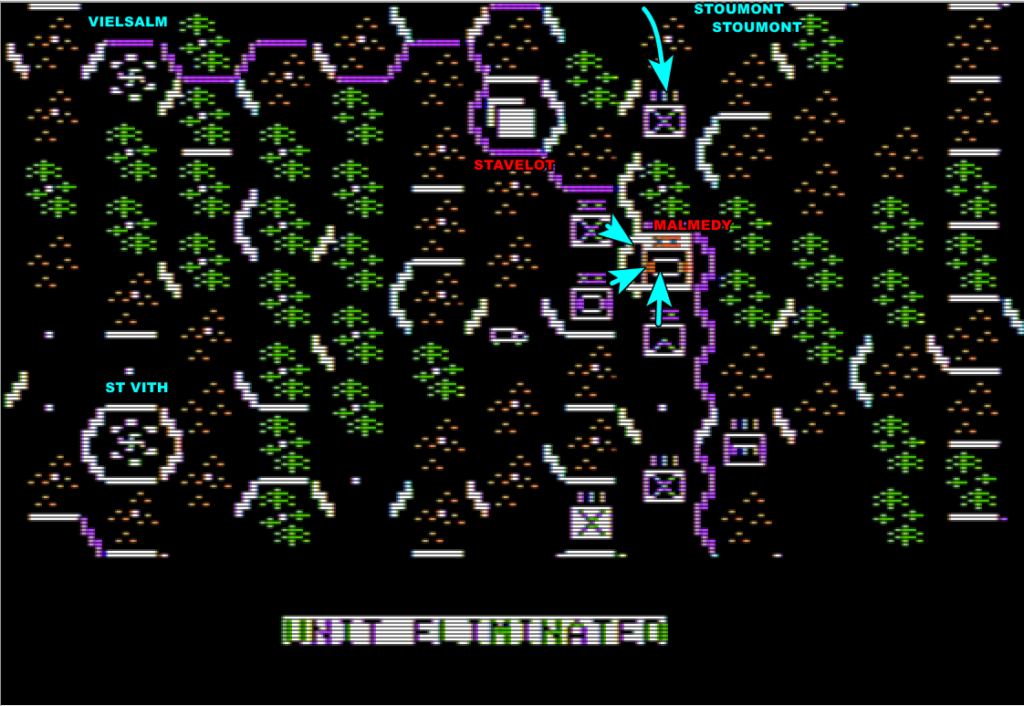
In the North-West, I bypass the enemy defence with my fast unit to reach St Hubert. It proves useless: the defending Allied engineers are destroyed at the end of the first operation phase, and my units can pour in during the second one, also capturing Libramont.
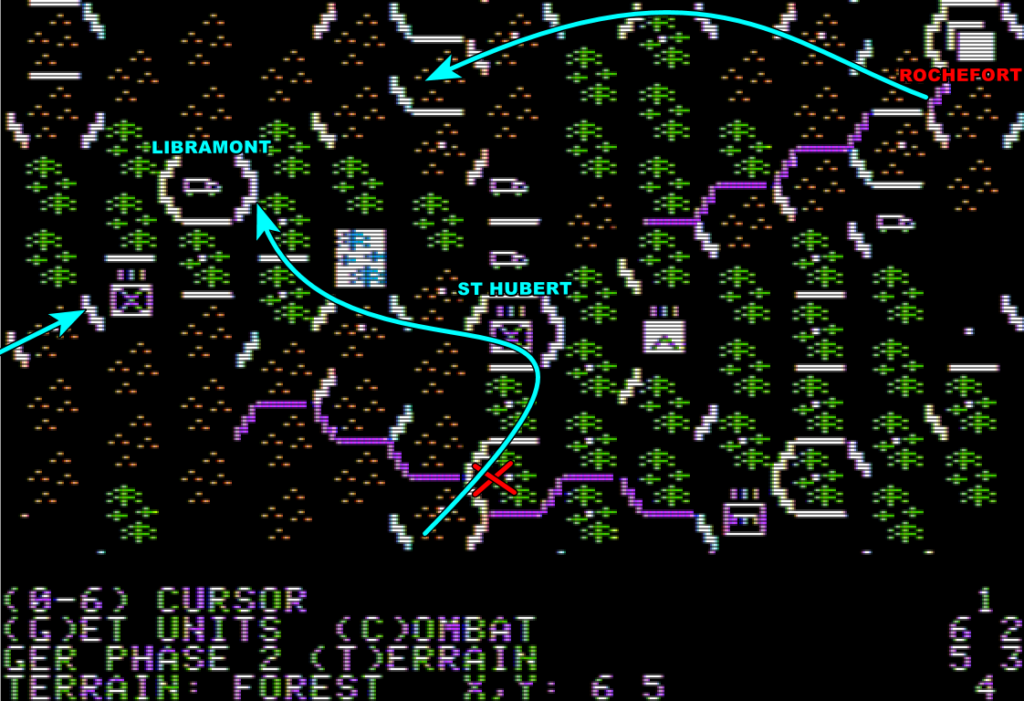
Finally, in the centre, I win some and lose some in terms of battles, but mostly start to play the little game of fortifying crossroads. Let’s see how much you like it, computer.
24th of December (Turn 9) – 1275 points.
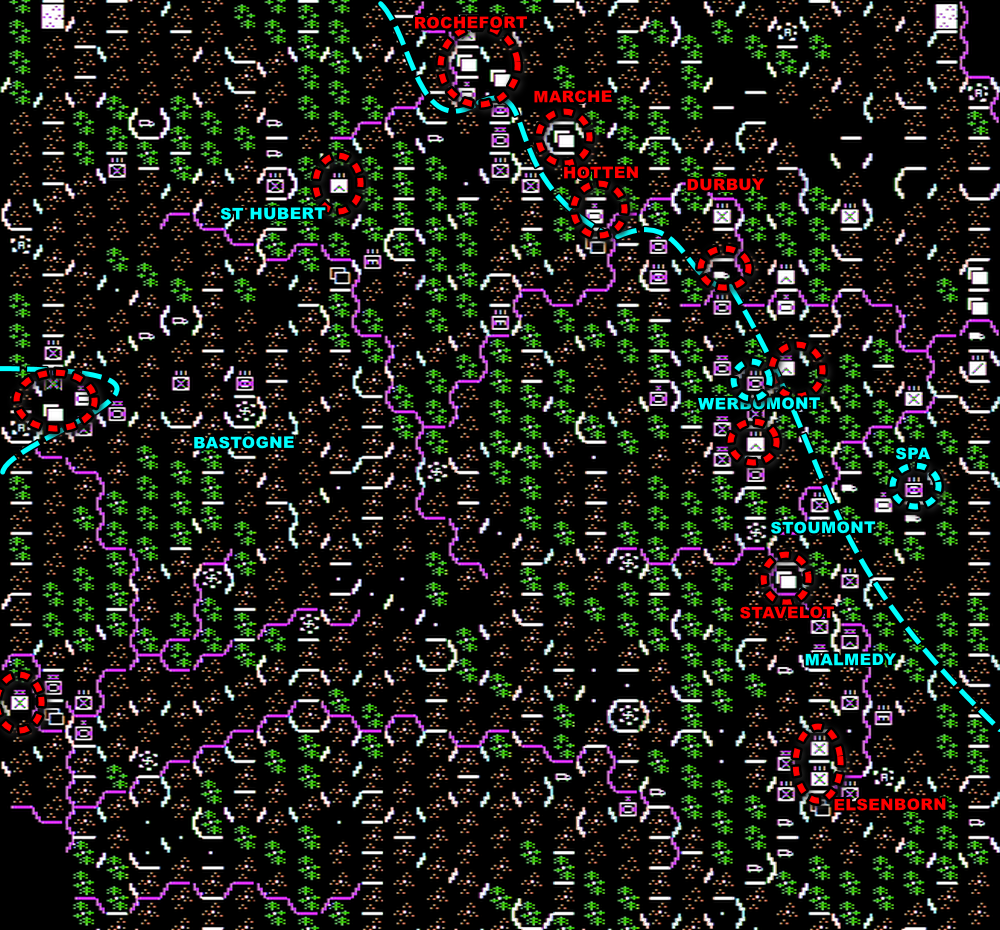
Well, I much prefer the look of the map! My objectives this turn are the continuation of the previous turn: destroy the units near Elsenborn and Stavelot, occupy these cities, and also destroy the enemy prongs in the West. I also see an opportunity to pierce the new front at Marche, allowing me to evacuate units after all.
This time, sadly, it does not go as expected. I take the defenceless Elsenborn, but only damage the units in front of it. I am bounced at Stavelot and Marche, albeit after dealing more damage than I received. On the other hand, my attack on the tiny group in the bottom-left of the map is a defeat and I lose troops at a 3:1 ratio. I underestimated the impact of crossing to attack the enemy, and I will just hold my position there. Finally, my attack on the enemy near Bastogne is successful in terms of relative damage… but the 4th US Armored Division retreats toward Bastogne. After two ill-thought-out attacks, Bastogne is now at risk!
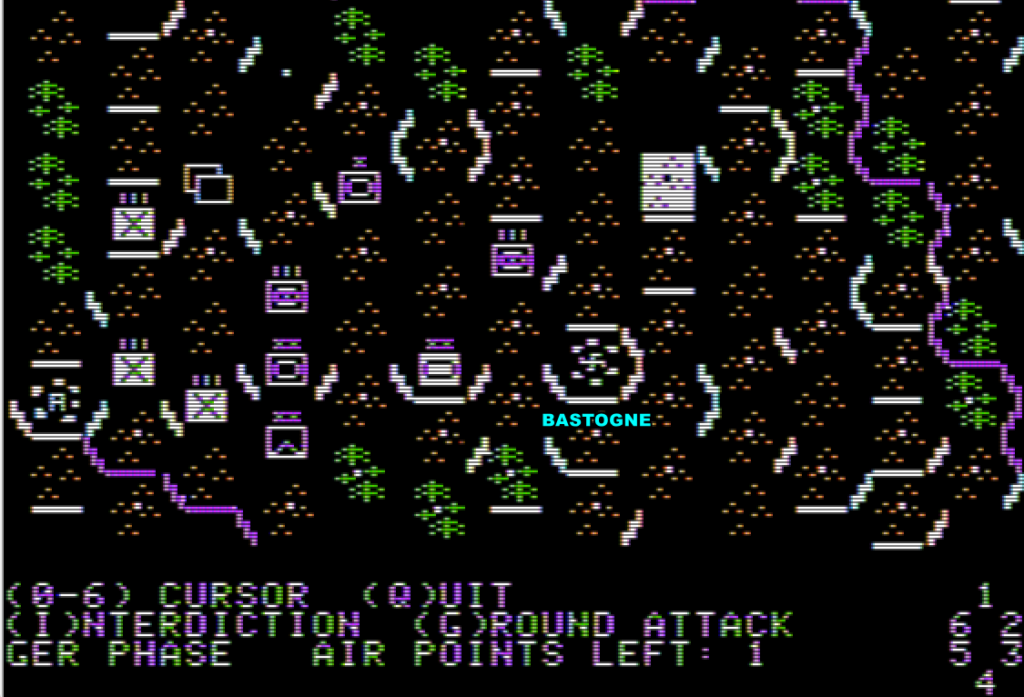
25th December (Turn 10) – 1575 points
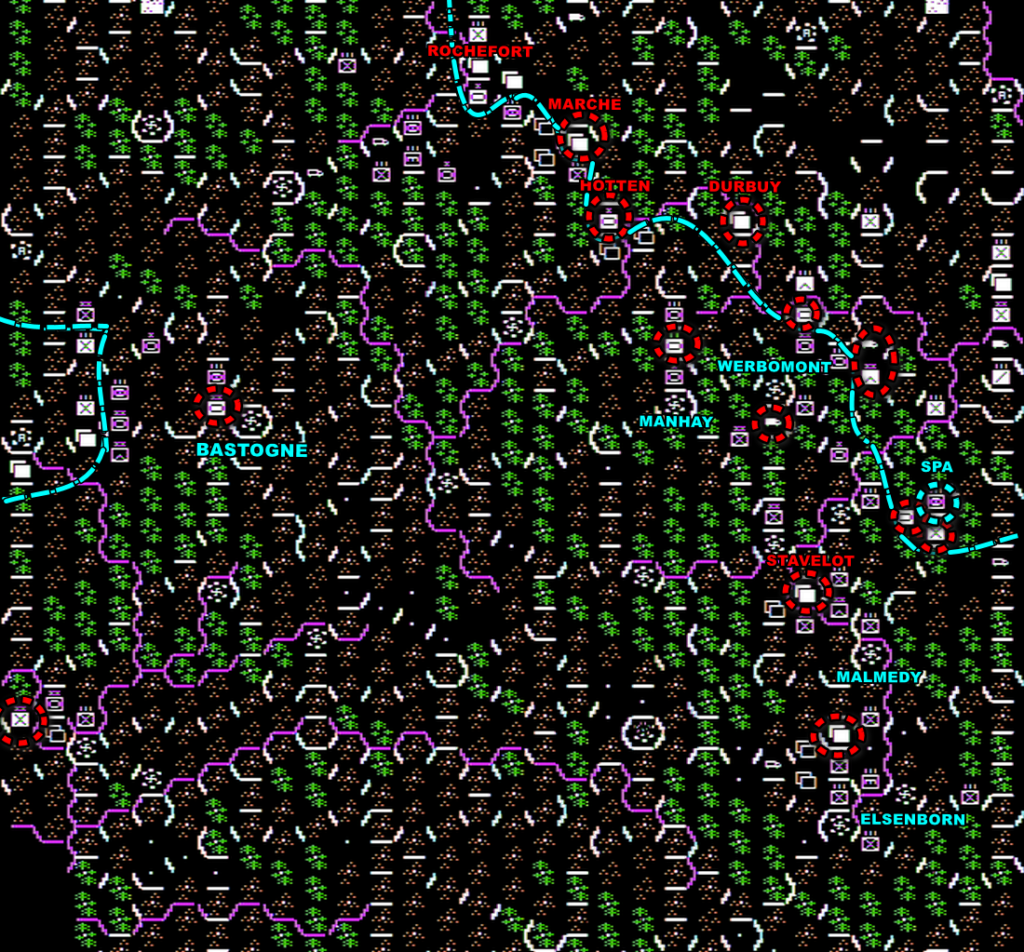
At this point, there is only one change in my strategy: get that 4th Armored Division away from Bastogne. Despite several attacks, I don’t manage to chase it, but I manage to insert enough units in Bastogne that it is now safe and will remain so until the end of the campaign.
Apart from that, there aren’t a lot of changes: I don’t take Stavelot nor Marche, but have a surprise victory at Hotten, and manage to sneak troops past Durbuy.
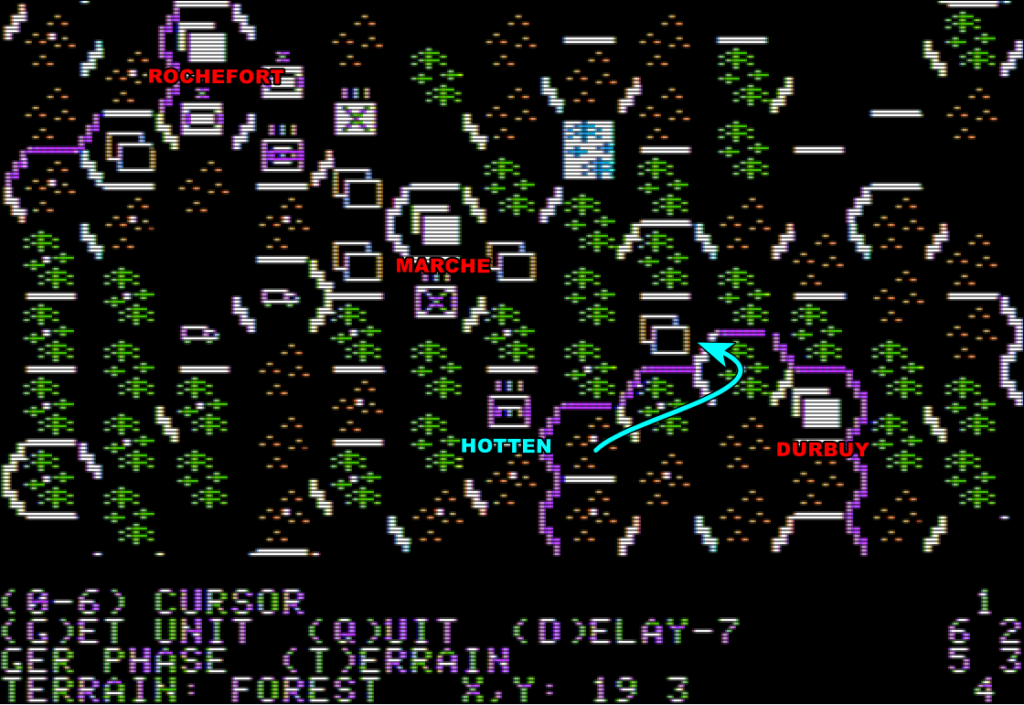
26th December (Turn 11) – 2100 points
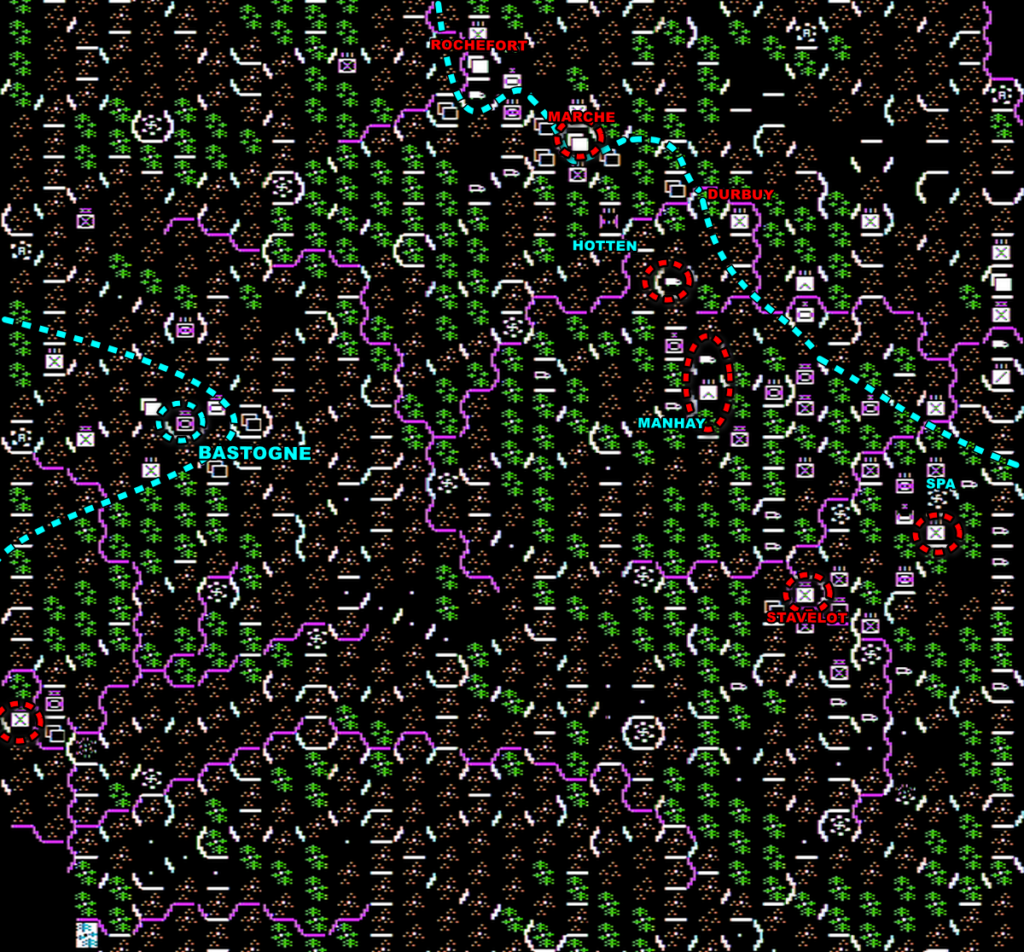
With the fall of Hotten and Marche now surrounded, I am extremely sure that I will finally have my final breakthrough! Alas, Marche holds out one more day against all odds, and so does Stavelot despite having been out of supply for the past two days. Meanwhile, the Allies screen the exit hexagons with a couple of units, so my last dim hope to grab some points by exiting units ends this turn.
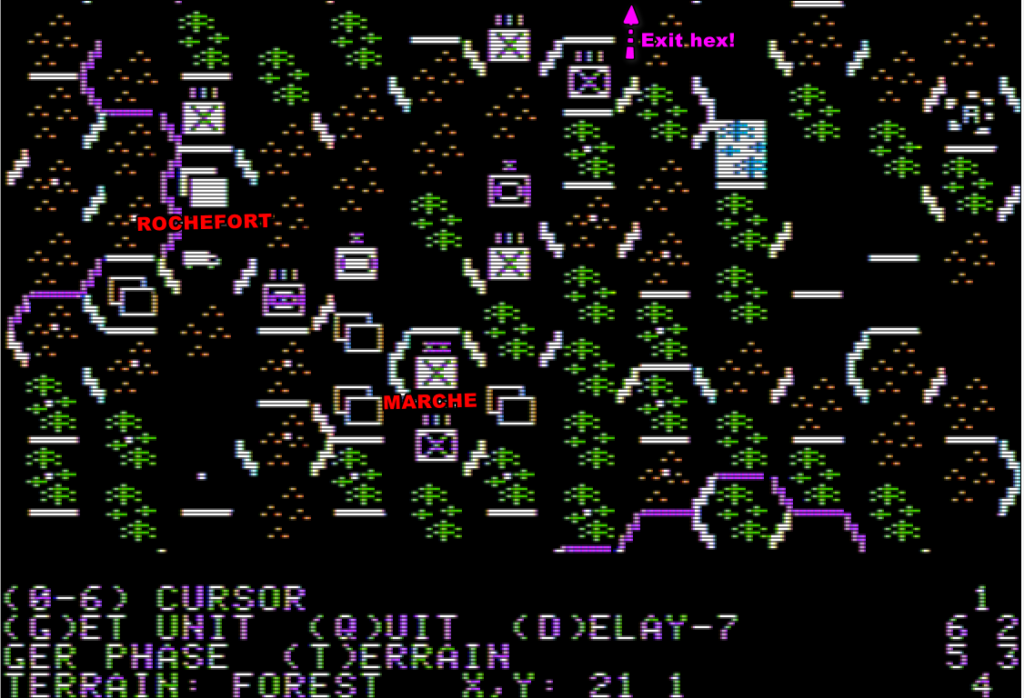
27th December (Turn 12) – 2775 points
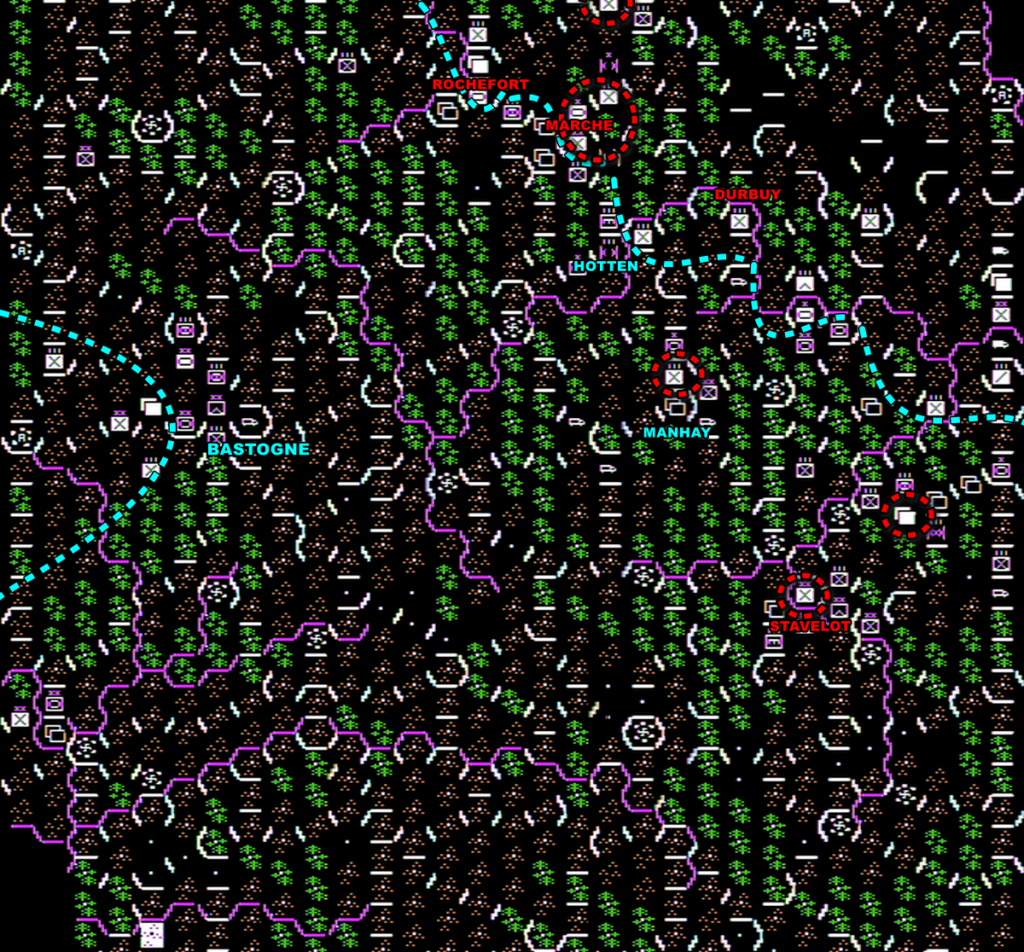
The sky clears again on the final day of the campaign, which the Allies use to immobilise most of my mobile units. The campaign concludes with final assaults on Marche and Stavelot which, finally, fall.
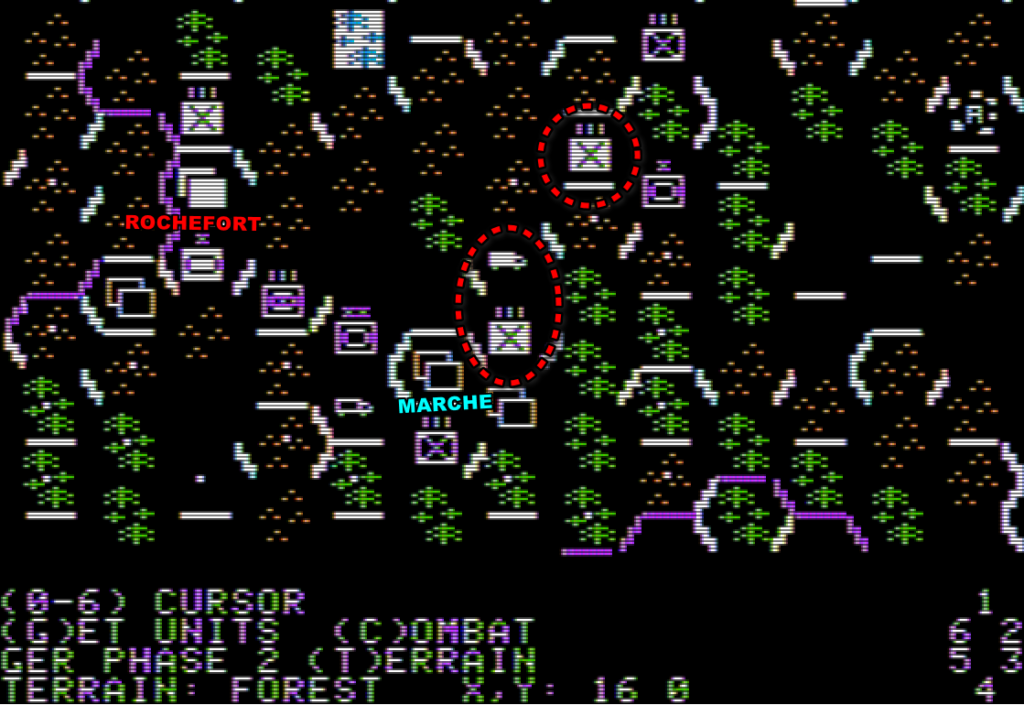
In the final point calculation, I receive twice as many points as I expected from the towns, extra points I had missed in the manual for controlling road hexagons at the top of the map, and a sizeable bonus for having a larger force than my opponent. I end the game with 4000 points, and given the manual describes anything about 2700 as a German strategic victory, I suppose I achieved a German cosmic victory. I haven’t sent any units toward Antwerp, but I am sure the Führer will be delighted by my conquest of the roughest part of Belgium.
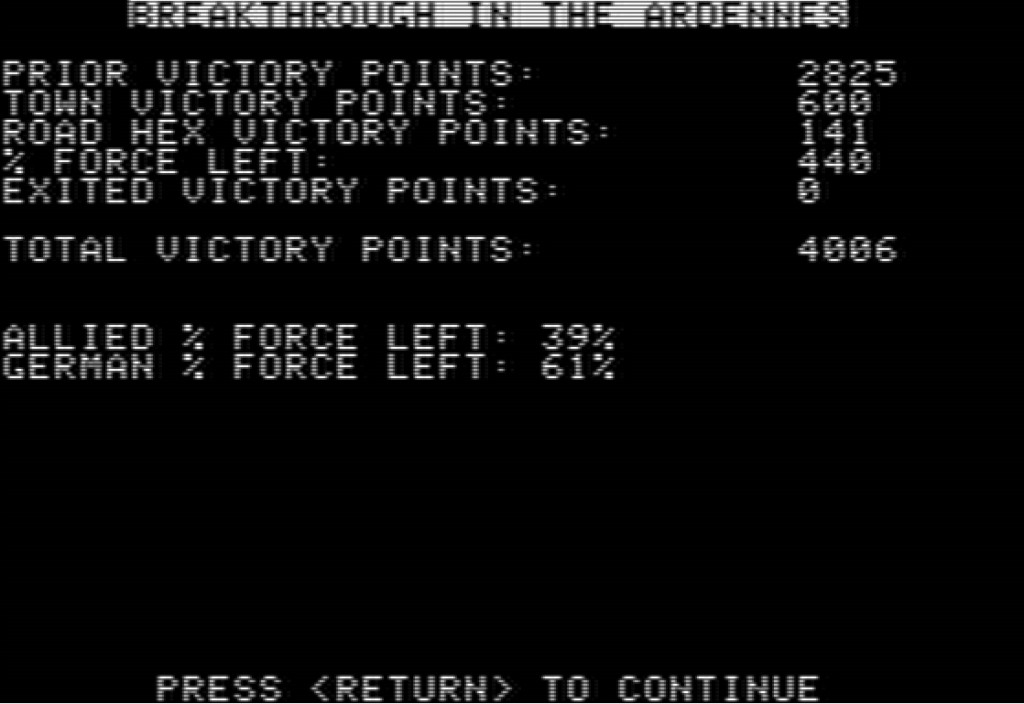
This absolute victory rings hollow, as I reloaded my saves again and again to cancel my movements. This happened almost never after checking the results of a battle, but usually after thinking something along the line of “ah, I forgot I had to move this unit before moving that unit” or “damn, didn’t I split this division into brigades? Back to the previous operation phase to fix it and then I will give all my orders again”. Mentally, I chalk the result of this campaign as undetermined, neither a victory nor a defeat.
Ratings & Reviews
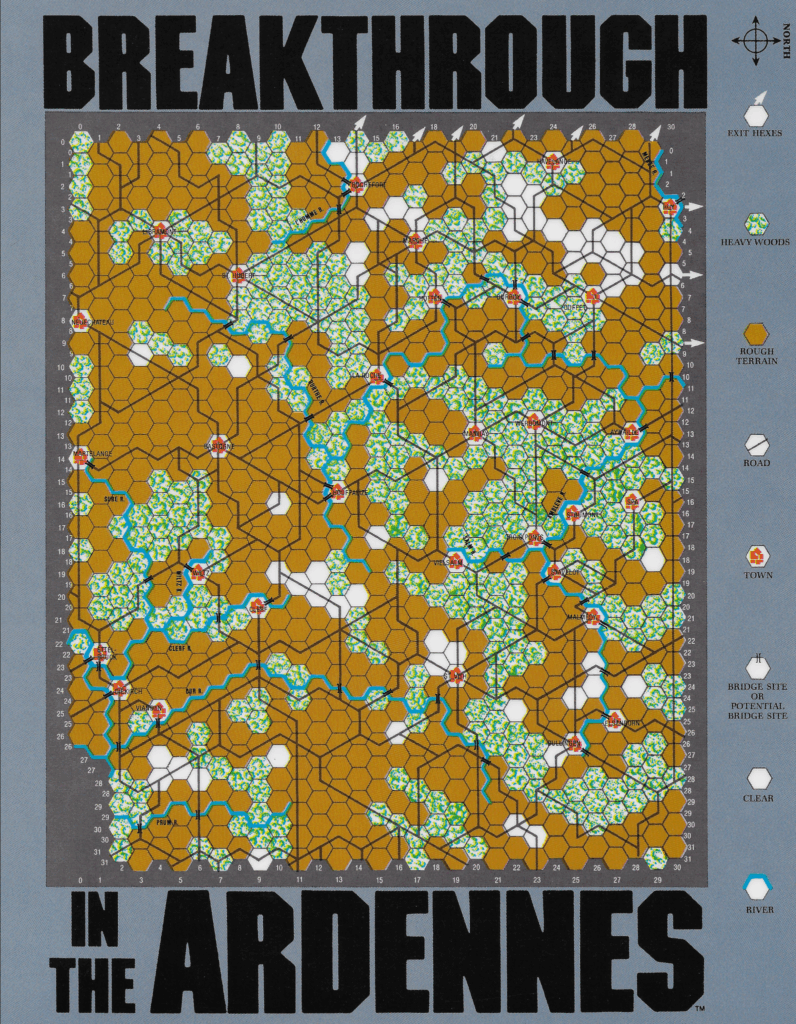
Breakthrough in the Ardennes by David Landrey and Chuck Kroegel, published by SSI, USA
First release: September 1984 on Apple II and Commodore 64
Genre: Land Operations
Average duration of a campaign: Around 12-15 hours
Total time played: More than 30 hours
Complexity: High (3/5)
Final Rating: ☆☆
Context – Breakthrough in the Ardennes is the 5th game from Chuck Kroegel and David Landrey, and their second on the Battle of the Bulge. David Landrey had also self-published, alone, two other games on the Bulge in 1980, so the topic is close to their heart. Kroegel and Landrey had worked thus far as external developers (the “Tactical Design Group”), but in August 1983, after Knights of the Desert, the Tactical Design Group ceased to exist as Kroegel was hired by SSI as a game developer (which back then meant “producer”, not “coder”). Still, he carried on working for Landrey as if both were external developers, and both received royalties for Breakthrough in the Ardennes.
I never managed to contact Landrey and Kroegel about their games, but luckily, Kroegel published designer notes in Computer Gaming World. After commenting on how popular the theme was for designers (he counted 8 board games and 2 video games on the topic), Kroegel explains what he and Landrey had aimed to do with their new iteration: “We set our goals to capture the essence of that battle. We wanted the German player to experience the difficulty of managing armored advances along channelling roadways and over crucial bridge sites. We wanted him to feel the crunch of dwindling fuel and unit stamina as he expanded his bulge in front of ominously building American resistance.”
Presumably, “dwindling fuel” did not make it in the final product, but the logistical nightmare of moving huge forces along roads is there, thanks to, as Kroegel explains it, “road movement being really the only viable movement through the forested and rough terrain of the Ardennes […] Such a design created natural traffic jams behind key bridges and clogged limited road avenues.” However, designer notes in a publication like Computer Gaming World are always going to be at least a bit personal branding, and Kroegel did not mention what I believe must have been his main inspiration: SPI’s Bastogne (1969), as identified by commenter Ken Rutsky.
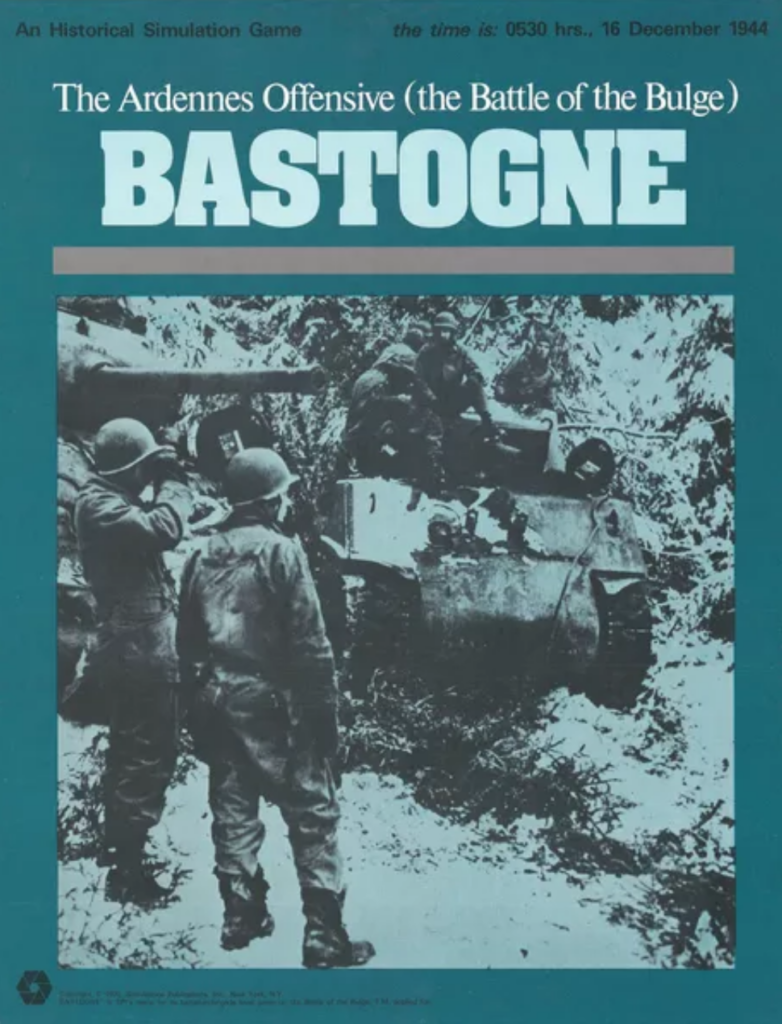
Bastogne is one of the early designs by James F. Dunningan, and an answer to Avalon Hill’s Battle of the Bulge (1965). Dunningan knew the latter well: it is thanks to a critique of Battle of the Bulge that he was initially recruited by Avalon Hill. Dunningan appreciated Battle of the Bulge as a game, but found it unrealistic: “After going over the data many, many times I concluded that the chief factor for the ‘size’ of the German defeat was their inability to control traffic. […] The Germans were defeated by a traffic jam.” The ruleset of Bastogne included highly specific rules that would find their way into Breakthrough in the Ardennes: not only the draconian movement rules (including a cost in movement points for passing through friendly zones of control), but the capacity to break down divisions into more flexible regiments on the fly for mobility. Bastogne ended up with the reputation of being difficult to play, with Dunningan ultimately vindicating Avalon Hill’s choice on realism (“After Bastogne I decided to emphasize playability in my Bulge designs.”). However, Kroegel and Landrey reckoned that what was tedious for human players could be handled easily by a computer, and so 15 years later divisions could be broken into regiments or block the movement of friendly units all over again!
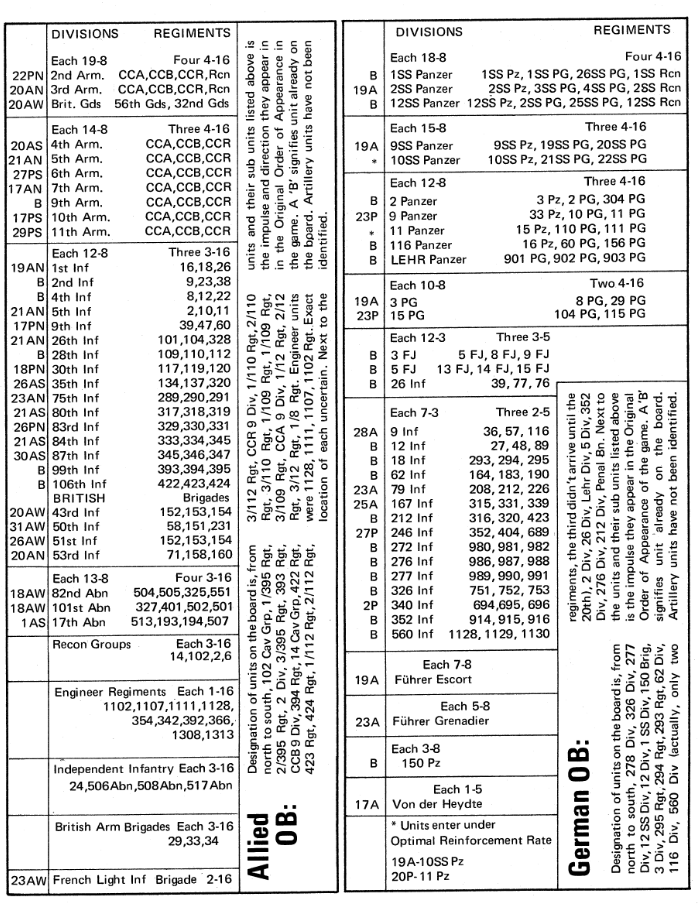
This is not to say that Breakthrough in the Ardennes is a 1:1 copy of Bastogne, far from it. Kroegel and Landrey (if I am correct with regards to Bastogne as their inspiration) took the key concepts, but after that they deepened some systems (movement in particular – the “transport mode” is not found in Bastogne) and simplified others. Breakthrough is an original game, built on the ideas of Bastogne but also on all the experience Kroegel and Landrey accumulated in the previous years on their increasingly good wargames, particularly with regards to UX (not seamless yet, but not consistently frustrating either) and simplified-yet-important supply rules.
Breakthrough in the Ardennes was released on Apple II and Commodore 64 in September 1984, with the Atari version following one month later. It was priced at $59.95 and not $39.95 like the other Kroegel/Landrey games. For this price, the game offered only 3 scenarios: the long one I played, and two short ones (first 7 days and last 7 days) – though of course this is a long game to play, and with replay value if you like the theme.
Traits – I have already covered in the AAR the movement rules of the game: they’re overbearing, and 80% of your attention will be allocated to movement: movement order, transition to transport mode or not, bridging, and of course which enemy unit to remove from your way. It works well and gives a puzzle-like quality to the game, but it is too punitive for a 1984 UX. This kind of feature requires the capacity to cancel moves seamlessly to test various combinations before committing the turn. Lacking a “back” button, I could not resist abusing my emulator’s loadstate feature, and I don’t think it’s a “me” problem. Overall, I respect the idea, but I cannot praise the game for it.
Another topic deserving a mention is the AI. While it has some quirks you can exploit, it is stellar in defence during the first half of the campaign, destroying bridges, plugging holes in its lines disengaging systematically to force you to re-enter its zones of control (and pay the operation points cost), but hulking down in cities it must hold absolutely. However, the AI is useless in attack, which explains my AAR’s stale second half. The AI does not do anything more ambitious than local counterattacks. In my AAR, the computer left a good third of its units on the pointless rightmost column far from the frontline, when a dedicated push could have swept my exhausted units.
Did I take interesting decisions?– Always in the first half of the game. Much less in the second half, due to a passive AI that was unable to punch back.
Final rating: ☆☆ – Breakthrough in the Ardennes is by far Kroegel/Landrey’s best game, but I wish I did not feel compelled to reload so often. Boredom set in the second half of the game, due to the AI’s inability to counter-attack my forces and threaten my game.
Ranking at the time of review: 35/163.
Reception
Breakthrough in the Ardennes received uncharacteristically few reviews:
- a short review in Computer Entertainer in November 1984 (three stars),
- a micro-review by Mark Bausman in Computer Gaming World in December 1985 (“As an Advanced Level simulation, BIA achieves all of its objectives”),
- a uncommitted review in the Atari Computer Enthusiasts newsletter in May 1985,
- another short review in the French Tilt in December 1986, which, in typical Tilt inconsistency, calls the game “easy to play” before giving it 6/6 in difficulty – but 5/6 in interest.
The only meaty review I could find comes from Rick Teverbaught in Computer Power Play in October 1985. It is positive, though it cautions the reader that the game isn’t for beginners: “It’s not that the game is all that complicated. In fact, it couldn’t be simpler. The program gives you all the choices, you merely enter a number. Deciding what is the best choice under the circumstances is the real test.”
Evan Brooks immediately added Breakthrough to his “lists of all wargames”, but he never liked it. In Current Notes (November 1985), he gives Breakthrough two stars, but the three lines he writes about it tell another story: “the game suffers from poor graphics; determining the road network is a lesson in frustration. While the rest of the game appears workable, the frustration with map graphics will doom it to the dustbin of history”. I understand what he means on the road network, though of course it was also part of the challenge, but then the graphics were comparable or better than those of Battle for Normandy, which he rated 3 and a half stars in the same issue.
Possibly due the lack of press coverage, Breakthrough in the Ardennes was the first commercial failure of a Tactical Design Group game. It sold only around 5000 copies in the US, to compare to the 16000 copies sold by Knights of the Desert. Due to this, it was never ported beyond its three original platforms, and removed from the Spring 1987 catalogue. The venerable Tigers in the Snow, released in October 1981, was still there.
On an unrelated note – back in 2023, I had called for volunteers to join multiplayer games, thanks to whom I could cover various games such as Timelords, Dreadnought, Apocalypse or Dark Forest, to take a few examples. I opened a new thread for the upcoming games. These games are rarely good, but I found the experience nonetheless rewarding.